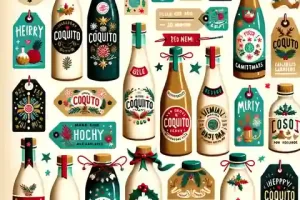Kosher food labels are an essential part of following Jewish dietary laws. These labels help you understand if a food item meets specific kosher standards.
What is Kosher?
Kosher foods are based on Jewish religious dietary laws. These laws dictate the types of food eaten, their preparation methods, and how they are processed. For many, these standards symbolize food safety and quality.
Kosher Symbols
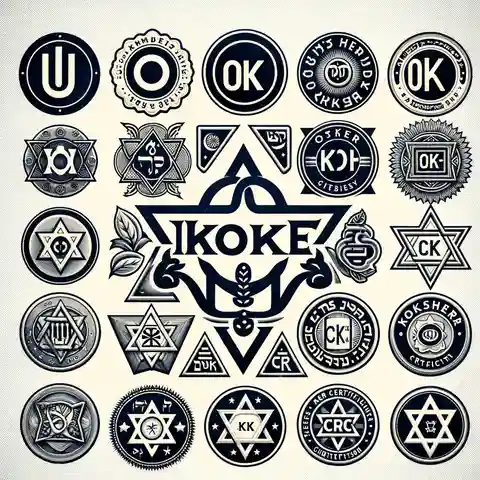
- Common Symbols:You’ll find various symbols on kosher products. These are quality stamps from different kosher certification agencies. Some well-known symbols include OU, OK, KOF-K, Star-K, and CRC. Each has a distinctive mark for products meeting their standards.
- Dairy (D or OU-D):Indicates the product contains dairy or was processed on dairy equipment.
- Meat (M or OU-M):This signifies that the product includes meat and is dairy-free per kosher laws.
- Fish (F or OU-F):Denotes products with fish, which can be mixed with dairy but not meat.
- Pareve (OU):Neither dairy nor meat. It can be eaten with both.
- Passover (P or OU-P):Suitable for consumption during Passover.
Kosher Certification and Inspection

Kosher certification agencies approve kosher food labels. There are hundreds of these agencies in the United States, with the larger ones being OU, OK, KOF-K, Star-K, and CRC.
The rigorous kosher certification process involves meticulous inspections to ensure strict compliance with Jewish dietary laws.
These inspections are carried out by trained experts, often rabbis or people with specialized training in the laws of kashrut (kosher laws). Here’s a deeper look into what this process involves:
- Choosing Ingredients:
- Experts check all ingredients in food to make sure they follow kosher rules. They ensure meat and dairy come from animals that are okay for kosher foods. They also check that plants and other ingredients haven’t touched things that aren’t kosher.
- Production Process:
- They look at how the food is cooked, the tools used, and the machines that make it. They make sure dairy and meat are kept separate and don’t touch each other or prepare foods (foods that aren’t meat or dairy).
- Checking Equipment:
- Kosher rules say that machines for dairy and meat should be different. Inspectors check this. They also ensure that machines labeled “DE” (for dairy equipment) are super clean after being used for dairy stuff.
- Looking at the Whole Place:
- They check the whole place where food is made. This includes where food is stored, cooked, and packed. They look for proper separation of kosher and non-kosher foods.
- Keeping an Eye on Things:
- Kosher checking is ongoing. Inspectors visit often, sometimes without telling when they are coming, to make sure everything stays kosher.
- Giving the Okay:
- Once everything is checked and okay, they give a special certificate. This paper tells that the product or place is kosher. The company must tell the kosher inspectors if anything changes in how the food is made or its ingredients.
Kosher certification groups like OU, OK, KOF-K, Star-K, and CRC do these checks. They are important for ensuring kosher foods are made right and help people know what they can eat.
Reading Kosher Food Labels
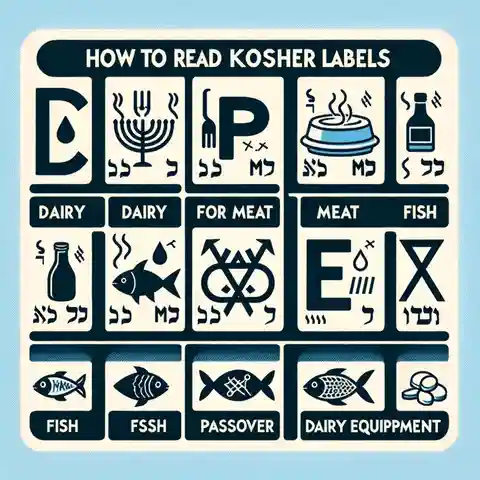
Looking for Symbols:
- When you see a package, first look for a special kosher symbol. This is like a little mark that tells you the food follows kosher rules.
- Different symbols mean different things, but all show that the food is kosher.
Additional Labels::
- Some foods have extra labels like “DE” or “CY”.
- “DE” means Dairy Equipment. It tells us that the food was made on machines also used for dairy, but it doesn’t have dairy in it.
- “CY” stands for Cholov Yisroel. This is a special dairy rule where someone watches the milk from start to finish to make sure it’s super kosher.
Cross-Contamination:
- If you or someone you know has allergies, especially to dairy, pay extra attention to labels.
- Even if a food says “DE”, it might have touched dairy things before. So, it’s always good to check if you’re allergic.
Remember, these kosher labels help people who follow kosher eating rules.
Mislabeling Issues
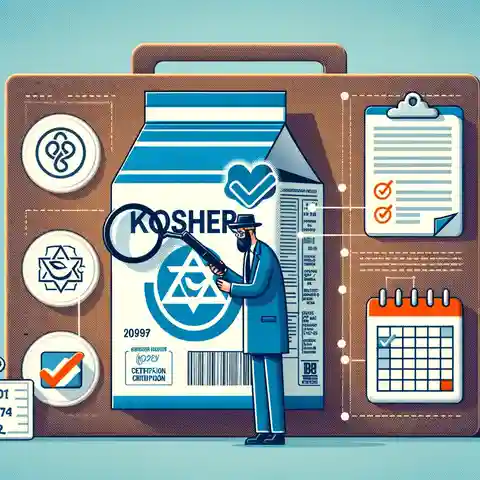
Sometimes, kosher food labels might not be correct. This can happen by mistake, but it’s important to watch out for:
Check the Certification is Up-to-Date:
- Always look at the kosher symbol to make sure it’s valid. Certifications have dates, and it’s good to check that they haven’t expired.
- If you need more clarification, contact the Kosher certification agency listed on the label if unsure. They can tell you if the product is still kosher-certified.
Changes in Production:
- Sometimes, how a food is made can change. This might affect its kosher status.
- If a food company starts making non-kosher foods or changes ingredients, the kosher label might not be right anymore.
New Facilities:
- If a food starts being made in a new place, the kosher status must be checked again. The new facility might still need to meet all the kosher rules.
Switching Certification Agencies:
- if a food company changes who checks their kosher status (like moving from one agency to another), there might be a time when the labels aren’t updated yet.
Double-Check for Allergies:
- If you have allergies, especially to dairy or meat, it’s important to ensure the label is correct. Sometimes mislabeling can happen with symbols like “DE” or “Dairy”.
It’s all about being cautious and ensuring your food is truly kosher and safe for you. If you have doubts, asking or doing more checking is always okay.
Food Allergies Kosher Food Labels
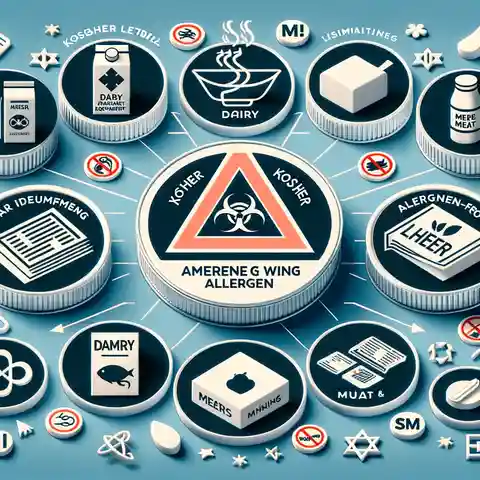
When it comes to food allergies, kosher labels can be a helpful tool, but they are not perfect. Here’s why and what you should keep in mind:
Kosher Labels and Allergies:
- Kosher labels tell us if a food is dairy, meat, or neither (pareve). This is good for avoiding certain allergens.
- But, just because a food is marked kosher, like “pareve” (which means it should have no dairy or meat), doesn’t guarantee it’s free from all allergens.
Cross-Contamination Risks:
- Some foods might be made on the same equipment used for dairy or meat products. Even if they are cleaned, there’s a small chance of allergens being present.
- Products labeled with “DE” (Dairy Equipment) might not contain dairy, but they’re made on machines that also make dairy products. This could be risky for those with dairy allergies.
Not All Allergens Are Covered:
- Kosher labels mainly focus on dairy and meat. They don’t always cover other common allergens like nuts, eggs, or gluten.
- If you have allergies to these, you’ll need to read the full ingredient list, not just the kosher label.
Always Double-Check:
- If you have severe allergies, it’s crucial to read the full ingredient list and allergy warnings on food packages.
- Even with a kosher label, manufacturers might change ingredients or processing methods, so regular checking is important.
Consulting with Experts:
- If you’re unsure, it’s a good idea to talk to a doctor or a dietitian. They can help you understand food labels better.
- You can also contact the food manufacturer or the kosher certification agency for more specific information about allergens.
Kosher food labels are a helpful guide for those with certain food allergies, they are not completely foolproof. It’s always best to be cautious and check all the details if you have severe allergies.
Understanding kosher food labels is not just about religious adherence; it’s also about ensuring the quality and safety of the food we consume. Whether for dietary, allergy-related, or religious reasons, these labels provide essential information to make informed choices about what we eat.
